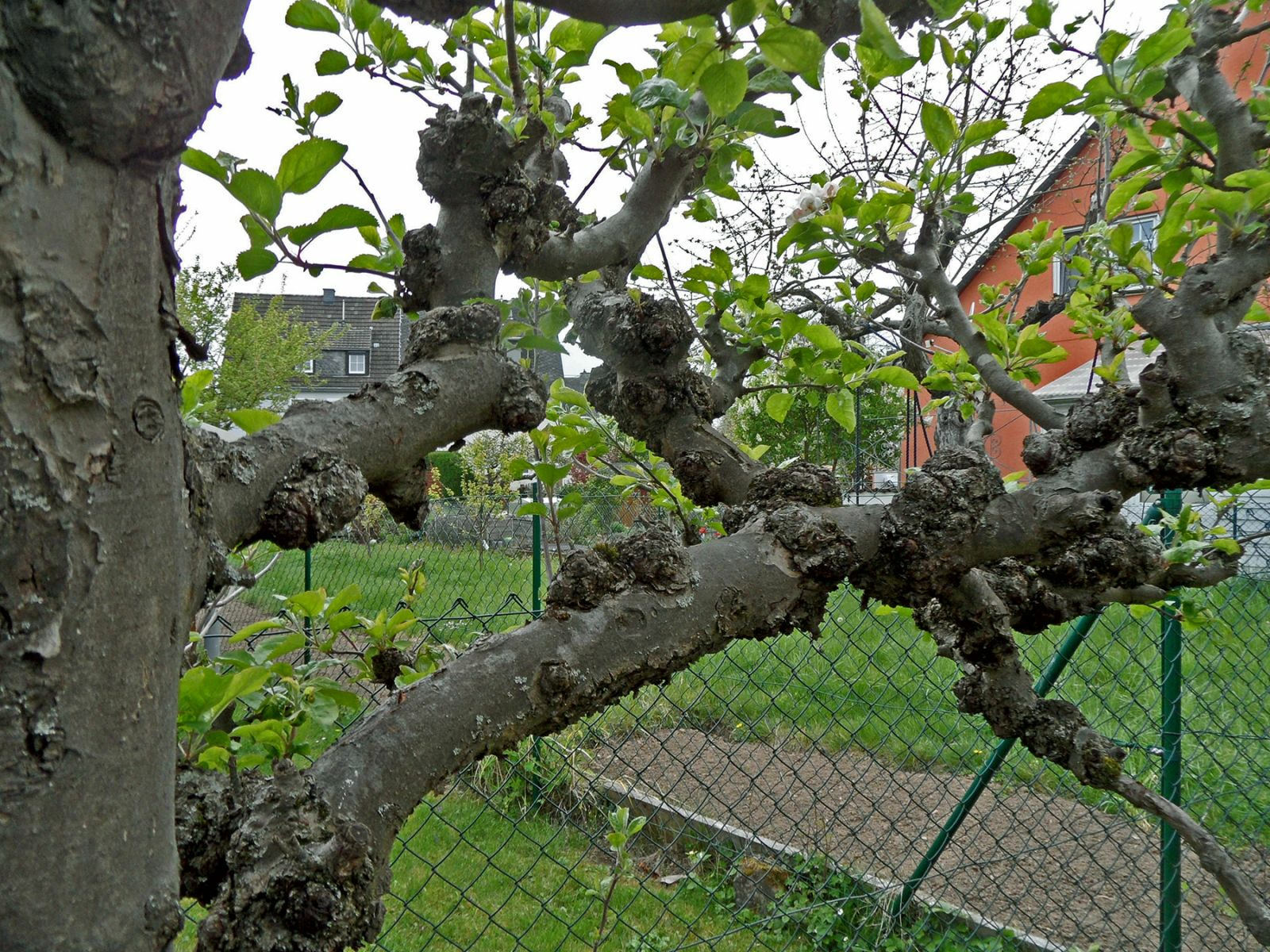
Recognizing and Combating Shoot Diseases: Fire Blight & Co.
Dying or changing shoots can indicate a plant disease. To find out which disease you are dealing with, here is an overview of the four most common shoot diseases in the garden. These diseases mainly affect the shoots and often also the leaves of the plants. Read more about the symptoms and ways to combat these plant diseases here.
This Article Contains:
Quick Overview
Damage Caused by Fire Blight, Fruit Tree Canker & Co.
- Damage caused by fire blight (must be reported!): leaves, shoot tips and flower stems turn brown to black; shoot tips die off; infected plant parts look as if they have been burnt (susceptible plants include apple, pear, quince, hawthorn, firethorn, rowan, serviceberry and rock pear)
- Monilia tip drought: flowers turn brown; shoot tips begin to wilt and eventually dry out; dried plant parts remain on the tree until winter; gum flow (especially in stone and pome fruit)
- Fruit tree canker: formation of tumors starting at the bark with small, sunken pale brown spots (fruit trees such as apples and pears are particularly susceptible, but also alders, birches, hawthorns, beeches, ash trees, walnuts and poplars)
- Boxwood shoot dieback: black-brown longitudinal stripes on the shoots; orange to dark brown spots on the upper leaf surfaces; a white fungal carpet forms on the undersides of the leaves; later dieback of the shoots and leaf drop
Recognize Fire Blight (Erwinia Amylovora)
- Symptoms: Leaves, shoot tips and flower stems turn brown to black; shoot tips die off and grow poorly; infected plant parts look as if they have been burnt (hence the name fire blight)
- Susceptible plants: Woody plants, especially pome fruit such as apple, pear, quince, hawthorn, firethorn, rowan, serviceberry, rock pear
- Fire blight is notifiable, so you should report it immediately to the responsible state office or the State Institute for Agriculture! But beware, the disease can easily be confused with other diseases (e.g. monilia).
- Recognizing, combating and preventing fire blight (unfortunately the article is still missing, but will be added soon!)
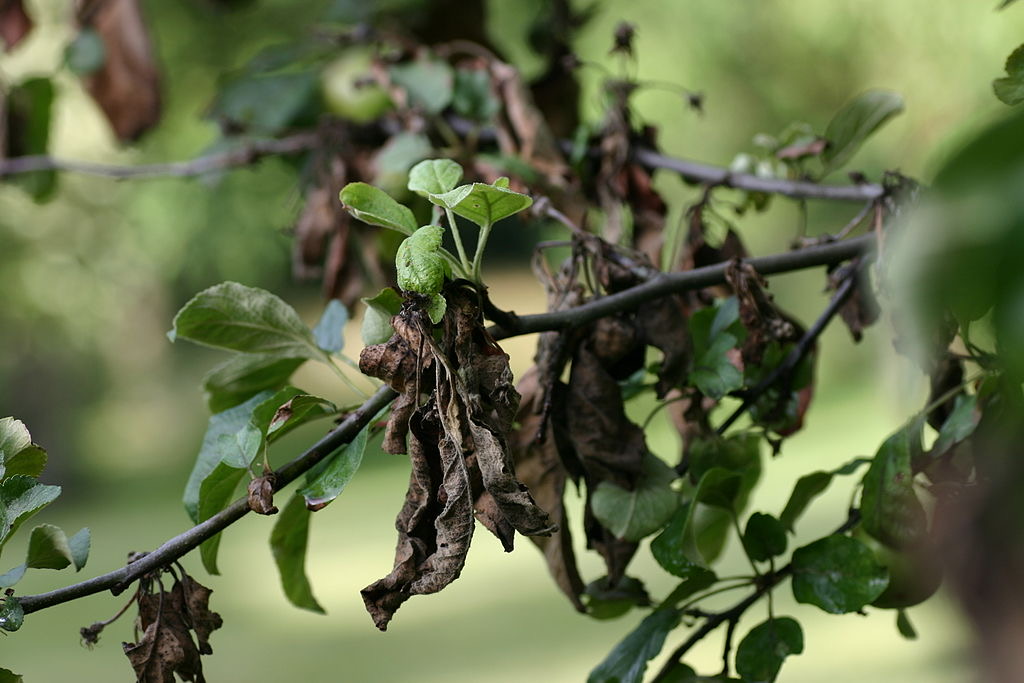
Monilia Top Drought
- Symptoms: Blossoms turn brown during or shortly after flowering; after three to four weeks, shoot tips begin to wilt and eventually dry out; dried plant parts remain on the tree until winter and are not shed; so-called gum flow often occurs at the transition from healthy to diseased wood
- Susceptible plants: mainly stone and pome fruit such as sour cherries, apricots, peaches and plums
- Fighting and preventing monilia (unfortunately the article is still missing, but will be added soon!)
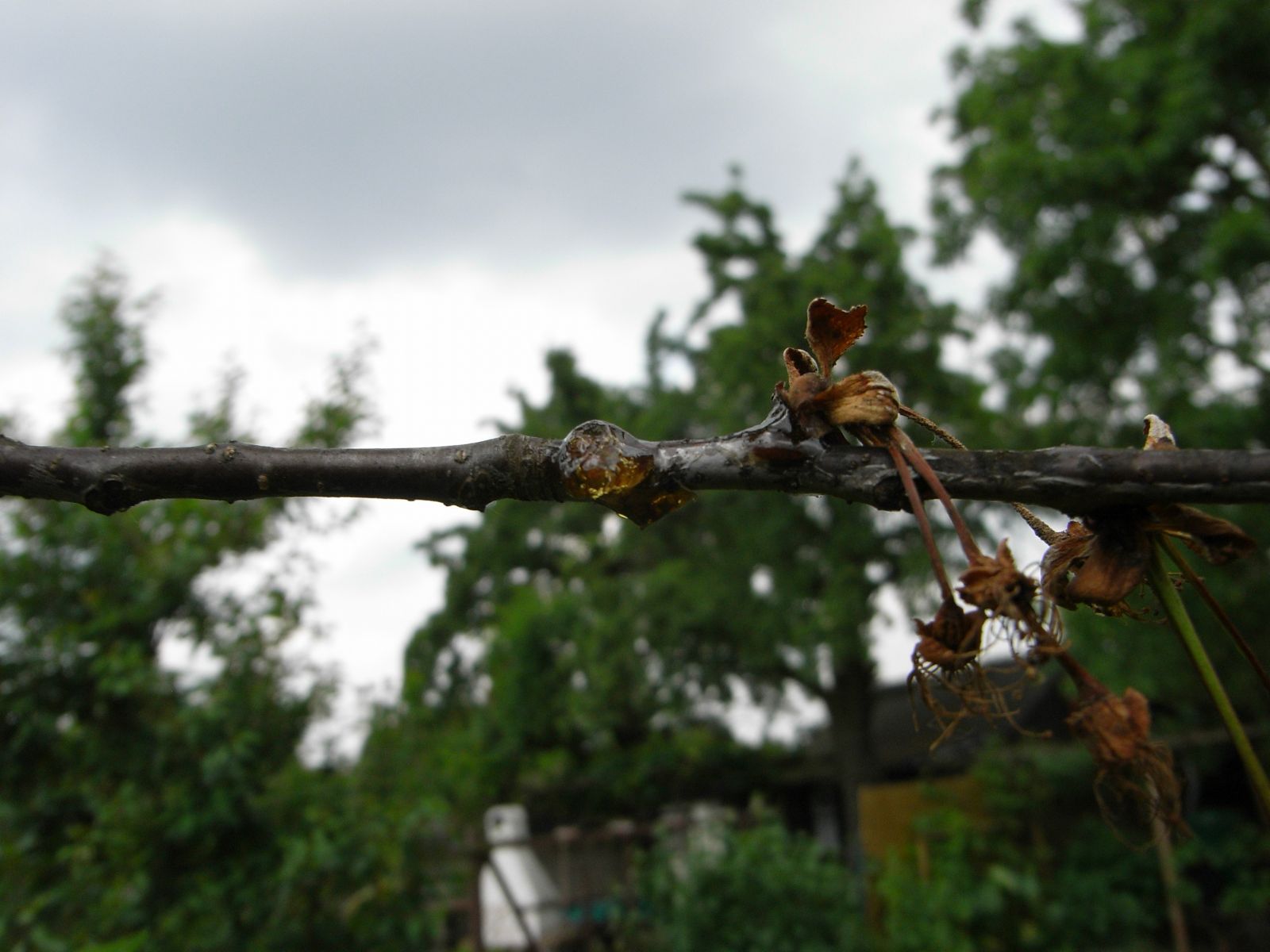

Need Help to Recognize the Disease?
In our Fryd community you will find help in recognising your plant disease. Here you can learn from more experienced and helpful gardeners.
Become Part of the Community NowFruit Tree Canker (Neonectria Ditissima): Recognizing the Damage
- Symptoms: the bark of the shoots is affected first; small, sunken pale-brown spots appear on the bark; infection spreads rapidly; larger areas of infection develop, which the tree closes like bulges (formation of tumors)
- Susceptible plants: especially on fruit trees such as apples, pears; deciduous trees such as alders, birches, hawthorns, beeches, ash trees, walnuts and poplars
- Combating and preventing fruit tree canker (unfortunately the article is still missing, but will be added soon!)
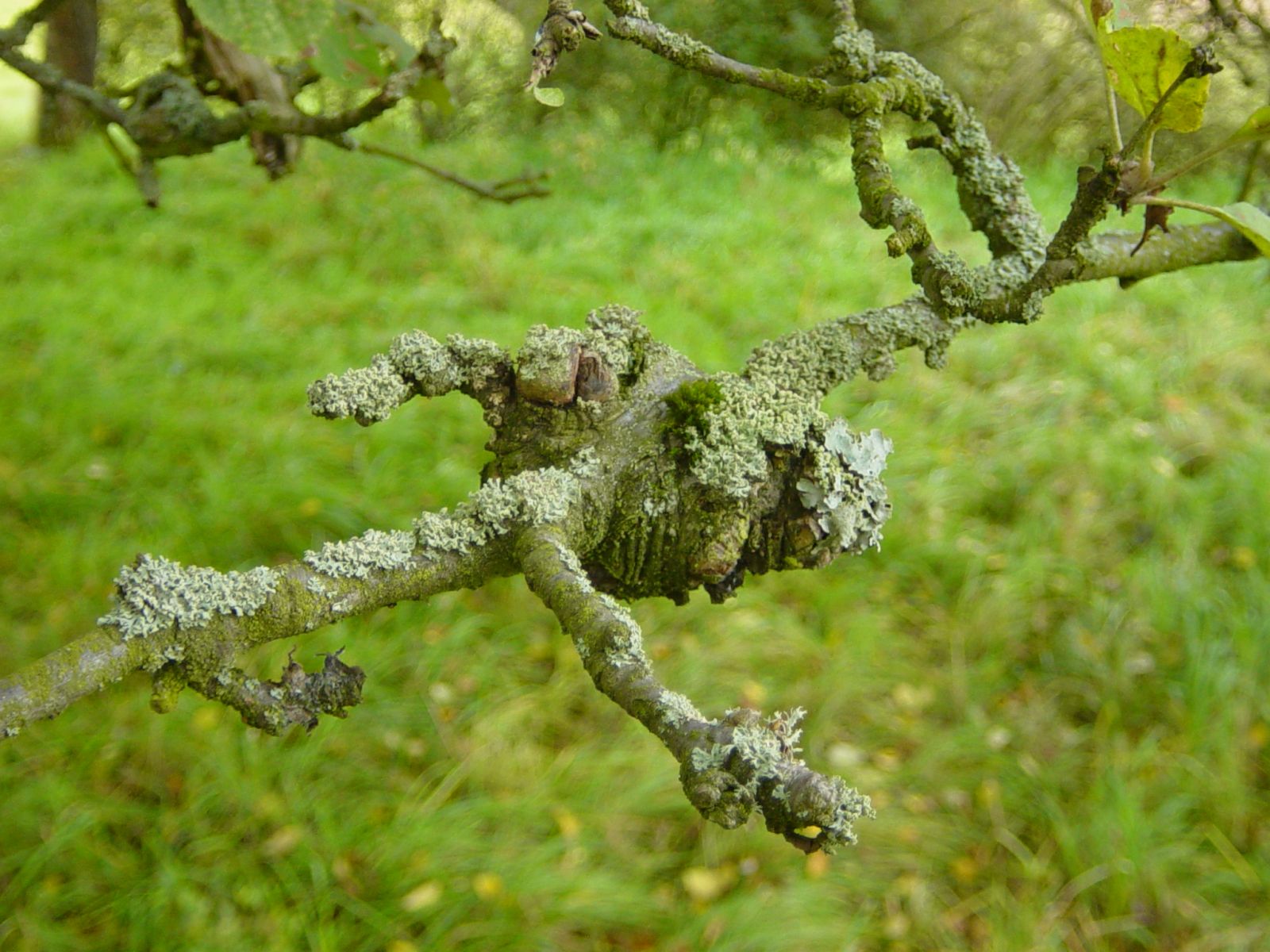
Boxwood Shoot Dieback (Cyclindrocladium Buxicola)
- Symptoms: black-brown longitudinal stripes on the shoots; orange to dark brown spots on the upper sides of the leaves (quickly become larger, flow into each other and then cover the entire leaf); a white fungal carpet forms on the undersides of the leaves (use a magnifying glass!); later dieback of the shoots and leaf drop
- In addition to boxwood shoot dieback, shoot dieback can also indicate an infection with Phytophtora: Recognizing and Combating Phytophtora or Brown Rot
- Susceptible plants: as the name suggests, mainly box trees
- Fighting and preventing boxwood shoot dieback (the article on this is unfortunately still missing, but will be added soon!)
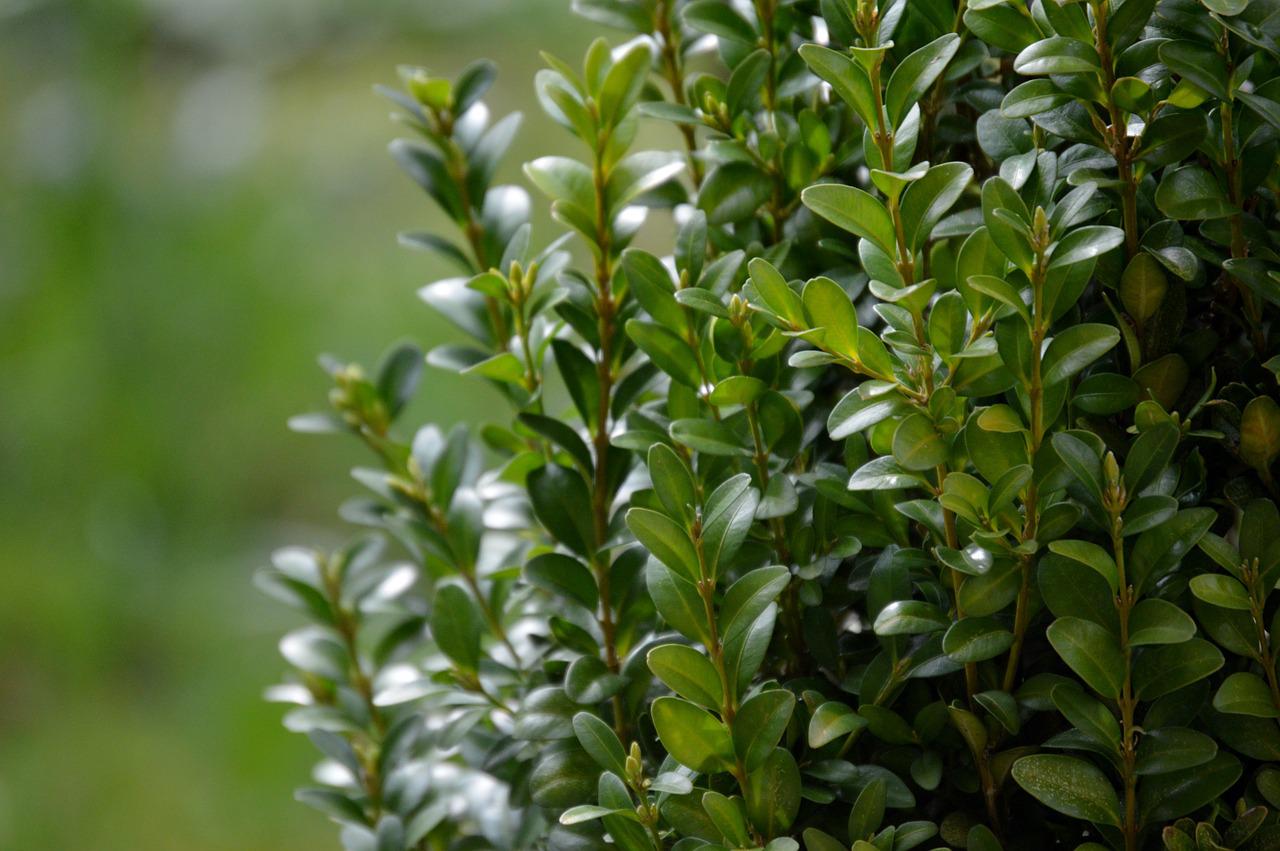
Hopefully you have found out which plant disease you are dealing with! We keep our fingers crossed that your plants will recover and that you have found a suitable remedy to combat it!
If you didn't find a suitable disease here, you can Find More Possible Diseases in the Article on Leaf Diseases in Plants This is because shoot and leaf diseases often cannot be clearly separated, as both shoots and leaves are usually affected.
If you have any questions or comments, please write to us at magazin@fryd.app.
Would you like to receive helpful gardening tips all year round and plan your own beds optimally? Then register here or download the Fryd app for Android or iOS.
Fryd - your digital bed planner
Cover image by onnola (CC BY SA 2.0) on Flickr.
Marie
Current Topics in the Community

#red , #tuesday

Liked 1 times
#testpostcount

Dec 2025
Popular Articles

Companion Plants for Carrots: What (Not) to Plant With Carrots

Companion Plants for Celery : What (Not) to Plant With Celery?

Strawberry Types: List of Best Strawberry Varieties

Companion Planting With Strawberries: Companion Plants and Planting Plan

Basil Varieties & Types at a Glance

What to Plant With Cabbage: Good and Bad Companion Plants

Fertilizing Strawberries: Home Remedies & Natural Fertilizers at a Glance

Growing Sweet Potatoes: Tips on Cultivation & Companion Plants

Companion Plants for Kitchen Herbs: Chives, Parsley & Co

What Herbs Can Be Planted Together?
FAQ
What is fire blight and how do you recognize it?
Fire blight manifests itself as brown to black colored leaves, shoot tips and flower stems. The shoot tips die off and infected parts look burnt. Pome fruits such as apples and pears are usually affected.
What are the symptoms of Monilia tip drought?
The flowers turn brown and the tips of the shoots begin to wither and eventually dry out. Gum flow often occurs at the transition from healthy to diseased wood.
How do you recognize fruit tree canker?
The bark of the shoots shows small, sunken, pale brown spots. The infection spreads rapidly and larger infection sites and tumors develop.
What is boxwood shoot dieback?
This disease is characterized by black-brown longitudinal stripes on the shoots and orange to dark brown spots on the upper leaf surfaces. Later, the shoots die back and the leaves drop.